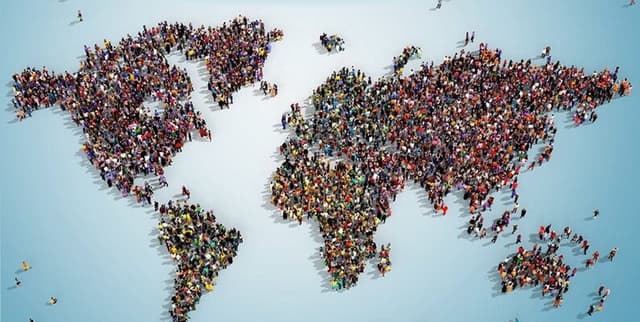World Population Projections Dataset
Data Science and Analytics
Tags and Keywords
Trusted By




"No reviews yet"
Free
About
World population figures for 232 countries, spanning from 1970 to 2022, and includes projections up to 2050. It allows for analysis of historical population trends, growth rates, and density. The data is useful for demographic studies, social science research, and understanding long-term global population dynamics, which indicate a declining growth rate that is projected to reach zero by the end of the 21st century.
Columns
- cca2: The two-letter country code.
- name: The full name of the country.
- pop2022: Population in the year 2022.
- pop2020: Population in the year 2020.
- pop2015: Population in the year 2015.
- pop2010: Population in the year 2010.
- pop2000: Population in the year 2000.
- pop1990: Population in the year 1990.
- pop1980: Population in the year 1980.
- pop1970: Population in the year 1970.
- pop2050: Projected population for the year 2050.
- pop2030: Projected population for the year 2030.
- area: The total area of the country.
- Density: Population density.
- GrowthRate: The population growth rate.
- WorldPercentage: The country's share of the total world population.
- rank: The country's population rank as of 2022.
Distribution
- Format: CSV file (
world-population.csv). - Size: 30.86 kB.
- Structure: The data consists of 17 columns and 232 rows, with each row representing a country. All columns are fully populated with no missing values.
Usage
This data can be used to analyse historical population shifts, forecast future demographic changes, and compare population metrics like density and growth rates across different countries. It is ideal for creating visualisations, building predictive models for population trends, and conducting cross-national demographic research.
Coverage
- Geographic: Global, covering 232 countries.
- Time Range: Includes historical data from 1970 to 2022 and future projections for 2030 and 2050.
- Demographic: Provides population counts for entire countries without specific demographic breakdowns.
License
CC0: Public Domain
Who Can Use It
- Social Scientists and Demographers: To study long-term population trends and their societal impacts.
- Data Analysts and Researchers: For statistical modelling and forecasting future population changes.
- Students and Educators: As a practical resource for learning about global demographics and data analysis.
- Policy Makers and Urban Planners: To inform decisions related to infrastructure, resource allocation, and international development based on population projections.
Dataset Name Suggestions
- Global Population Trends 1970-2050
- Country-wise Population Data and Projections
- Historical World Population by Country
- World Population Projections Dataset
Attributes
Original Data Source: World Population Projections Dataset
Loading...
